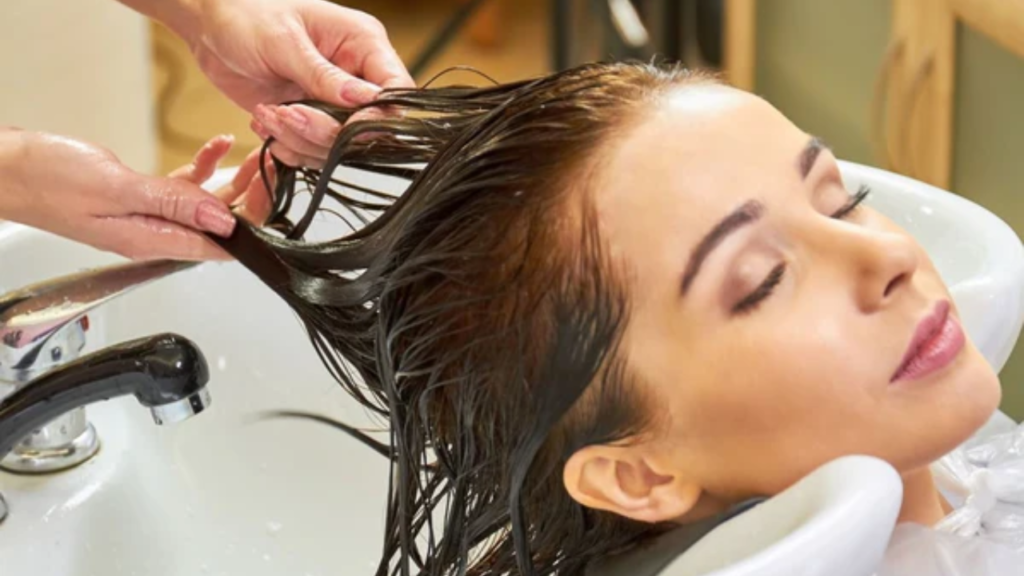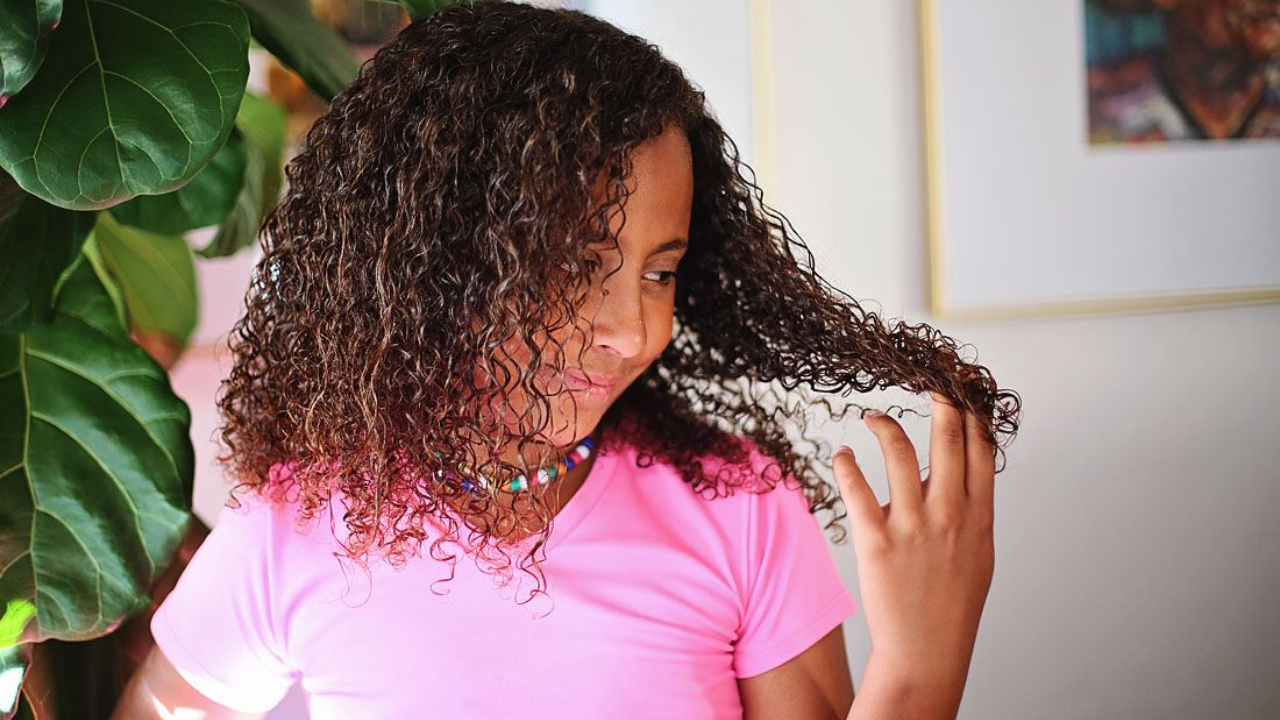Low porosity hair has the cuticles closely shut, which would mean that moisture and care products could not get deep in. Bad care for this hair type will, therefore, prove to be destructive rather than care-providing. Knowing what not to do will make all the difference when it comes to hair health.
Many people unknowingly do many things wrong in their low porosity hair care routine that would give them dryness, breakage, and buildup. Common mistakes include using the wrong products or missing out on crucial treatments. To maintain moisture and give way to healthy and very manageable hair, some changes have to be made in your routine according to what you learned suits low porosity hair needs.
This article will guide you through the most common mistakes and provide simple solutions to avoid them. After being aware of these mistakes, you’ll be in a better position to take care of your hair, retain it for longer time, and finally achieve the silky hydration it needs.

1. Using Heavy Oils and Butters
Heavy oils and butters like shea or coconut oil sit on the surface of low porosity hair. This leads to product buildup, making your hair feel greasy without adding moisture. The oils fail to penetrate tightly closed cuticles. Opt for lightweight oils that can better absorb into your strands.
Solution:
Use lighter oils such as argan oil or grapeseed oil. These oils are less dense and absorb more easily. You should apply the oils to damp hair to help seal in the moisture for better hydration. Your hair will be lighter, and greasier it would be, better hydrated.
2. Skipping Heat During Deep Conditioning
In such a case, conditioners cannot penetrate the hair since the cuticles close very tight on the hair of low porosity. Deep conditioning treatments do not work to their full potential in the absence of heat. The use of heat opens the hair cuticles, letting it draw deep into the hair cortex for moisturization. Get the best results when using a heat cap or steamer.
Solution:
You can use a heat cap, steamer, even a warm towel while deep conditioning. The heat will open up your hair cuticles so that moisture will penetrate in. With just a few treatments you are going to be surprised at how soft your hair gets and how it holds moisture for a longer period of time.
3. Overloading on Protein Treatments
Too much protein makes the hair feel stiff and dry when it comes to low porosity types. Although protein is what sets up strength, low porosity hair requires more moisture than protein. Overusing protein treatment may result in brittleness and breakage. It would be better to emphasize moisture with a minimal quantity of protein.
Solution:
Focus on moisture rather than protein. While your hair’s regular wetness level is essential, use it to your advantage by using treatments in balance; for example, have a protein treatment one day, and then a moisturizing treatment the other. Immediately switch to a hydrating mask if your hair gets stiff or too hard.
4. Using Cold Water for Rinsing
Cold water closes the hair cuticle too early, which does not allow moisture penetration. While wonderful for locking moisture into the hair, an entire routine done with cold water can dry out your hair completely. Try lukewarm water to keep those cuticles open while conditioning. Then close them shut with a cold rinse to lock it all back in.
Solution:
When rinsing, use lukewarm water. Lukewarm water helps to slightly open the cuticles, allowing your hair to absorb so much more moisture. Then, you give your hair a final cooler rinse to seal in the moisture in place, therefore giving it a hydrated feel and smoothness.
5. Not Clarifying Hair Regularly
Low porosity hair creates a blockade that prevents moisture from entering inside. Even the lightest products will collect over time. Using a clarifying shampoo once monthly will remove built-up deposition, so moisture reaches the hair strand. It is then healthy and easy to manage.
Solution:
Clarify your hair once a month with a clarifying shampoo. This removes all of the product buildup and leaves your hair to breathe. After you clarify, use a deep conditioner to restore moisture in your hair. Your hair will feel lighter, cleaner, and more receptive to moisture.

6. Applying Products to Dry Hair
Low porosity hair needs moisture to allow the product to penetrate. Applying products on dry hair only coats the surface, but does not penetrate into the strands; hence that hair dries up pretty quick and gives ineffective results. Leave-ins or oils must always be applied on damp hair to help to lock in moisture.
Solution:
Apply all hair products to damp or wet hair. This allows the product to mix with the water and seep down into the hair shaft so it can do its work. It sounds easy, but trust me, this makes the big difference for how your hair looks and feels.
7. Using Non-Water-Based Products
Non-water-based moisturizers, like heavy creams, sit on low porosity hair instead of actually hydrating it. Moisture-blocking products leave hair greasy atop but with a parched interior. Switch to water-based moisturizers for better absorption and hydration. Water or aloe vera should be the first ingredient.
Solution:
Use water-based products on your hair. Glyecie, aloe vera, or any form of water must be at the top of the list on an ingredient label. These will moisturize the hair and not weigh it down.
8. Neglecting Regular Moisture Treatments
Low porosity hair lives on moisture treatments. Skipping these, the hair becomes dry and brittle over time. Locking the hydration deep into the hair shaft through regular deep conditioning with heat aids in this way. Adding moisture treatment every week does ensure soft and hydrated hair.
Solution:
Hydrating treatments should be a part of your week. Use moisture-rich deep conditioners, leave-ins, and even hydrating oils. The more consistently you moisturize, the healthier your hair will feel.
9. Using Too Many Products
Too much product on low porosity hair can cause clogging of the hair type, building up on the hair, and blockage of moisture entering the hair. The hair is heavy and dry in the end. Simplify but acquire a few must-haves. Retention over multiple layers of creams or oils.
Solution:
Simplify your routine. Use as basic a regime as you can, with just the barest few products: good clarifying shampoo, a conditioner, and a leave-in. This is just letting your hair absorb what it needs without being weighed down by too much product.
10. Not Allowing Enough Time for Products to Absorb
Low porosity hair absorbs products slowly due to their tightly closed cuticles. On the other hand, it does absorb moisture pretty quickly, but rushing into the treatment is not wise since it won’t be absorbed fully. It takes longer to let the conditioners and treatments get absorbed. Soak deep conditioners in your hair for at least 30 minutes by applying heat so that hydration becomes better.
Solution:
Be patient. Allow time for the products to sit and penetrate your hair. When you are deep conditioning, you can leave the conditioner in your hair for at least 30 minutes, preferably with heat. You will start noticing a massive difference of how your hair soaks up moisture when given the time it needs.

11. Rough Handling During Wash Days
Fragile hair should be handled gently because they break or weaken easily by over-manipulation. Detangling or combing may lead to easy breakage or weakening of the hair shaft. Hence, always untangle very slowly using a wide-toothed comb or your fingers when wet. Sectioning allows less pressure on your hair and maintains healthy strands.
Solution:
Be gentle when touching your hair. You may use wide-tooth comb, or fingers for detangling. If it is necessary to detangle your hair, then do it by section because it will be much easier not to pull or tugging too hard. Detangle every time you are dry, and do not use conditioner because this is where friction would occur.
12. Ignoring Scalp Health
Most people tend to ignore the scalp, but when it comes to low porosity hair care, this is very essential. Poor care causes the follicles to clog up and generally have poor hair growth. Keeping the scalp well-massaged and treated with cleansing treatments keeps it clean and stimulated. Healthy scalp care leads to better moisture absorption and generally healthy hair growth.
Solution:
Try scalp massages. Use gentle scalp scrub or oil treatment once a week to clean and stimulate your scalp. Healthy scalp care can support better moisture absorption for hair with low porosity.
13. Avoiding Lightweight Oils
Other people avoid oils because they tend to cause oil buildup, but low porosity hair can really benefit from light oils such as argan or jojoba. These hydrate by locking in the water without weighing the hair down, so they can actually be used post-moisturizing to help lock in hydration and enhance shine.
Solution:
Lightweight oils include argan and jojoba. These oils seal moisture into the hair without weighing your hair down at all. Apply these after a leave-in conditioner to prevent build-up while securing moisture into your hair.
14. Using Sulfate-Heavy Shampoos
Sulfates are shampoos that strip away the hair natural oils, thereby leaving the hair dry. This, in turn, may aggravate the impact of moisture retention within the hair. Switching over to the use of sulfate-free shampoo would prevent hair from drying and retains the hair natural oils. It also strengthens the capacity of the hair to hold water and moisture as time progresses.
Solution:
Use shampoos without sulfates. These would make fewer harsh effects on your hair because it wouldn’t suck the much-needed water from it. You will find plenty of moisture-retaining shampoos that would hydrate your hair over time.
15. Inconsistent Hair Care Routine
Low porosity hair requires a routine to keep it healthily hydrated. Infrequent moisturizing and inconsistent application of products create an imbalance in the moisture balance within the hair. Stick to a schedule for washing, conditioning, and treatments. Consistency helps maintain moisture levels and reduces the occurrence of dryness.
Solution:
Develop a routine that suits your hair and do the regular wash days, moisture treatments, and clarifying sessions. With time, you will know that it has kept more moisture locked and looks healthier.

Conclusion
To keep your low porosity hair, avoid doing those common mistakes like having too much heavy oil, not using heat, protein overload, and cold water rinse. Always use lightweight, water-based products on your hair. Regular clarifying and moisture treatments are a must.
Be gentle with your hair, as well as make sure your scalp is getting attention. Stick to your regime so you don’t dry out those lovely locks; instead, just the opposite. The proper hair care can really make that low porosity hair shine through, keeping your mane very hydrated and under control.
Meta Description
“Know the worst mistakes to avoid in low porosity hair care. Improve your way of doing things about achieving better moisture retention through simple changes. You would definitely keep your hair healthy, hydrated, and manageable. Try all these easy tips for even better results.”
Frequently Asked Questions
What not to use on low porosity hair?
Answer: Avoid heavy oils and butters that can cause buildup.
What is a mistake for low porosity hair?
Answer: Overloading on protein treatments is a common mistake.
What is the best way to treat low porosity hair?
Answer: Use lightweight, water-based products and regular moisture treatments.
Is hot water bad for low porosity hair?
Answer: Hot water can damage low porosity hair, so use lukewarm water instead.
Is rice water OK for low porosity hair?
Answer: Rice water can be beneficial in moderation, but avoid overuse.
What oils are bad for low porosity hair?
Answer: Heavy oils like coconut and castor oil are not ideal for low porosity hair.
Is keratin bad for low porosity hair?
Answer: Keratin treatments can be harmful if used excessively, leading to dryness.
Read more here: How to Use Hair Paste for Men: The Ultimate Guide to Achieving Effortless Style
